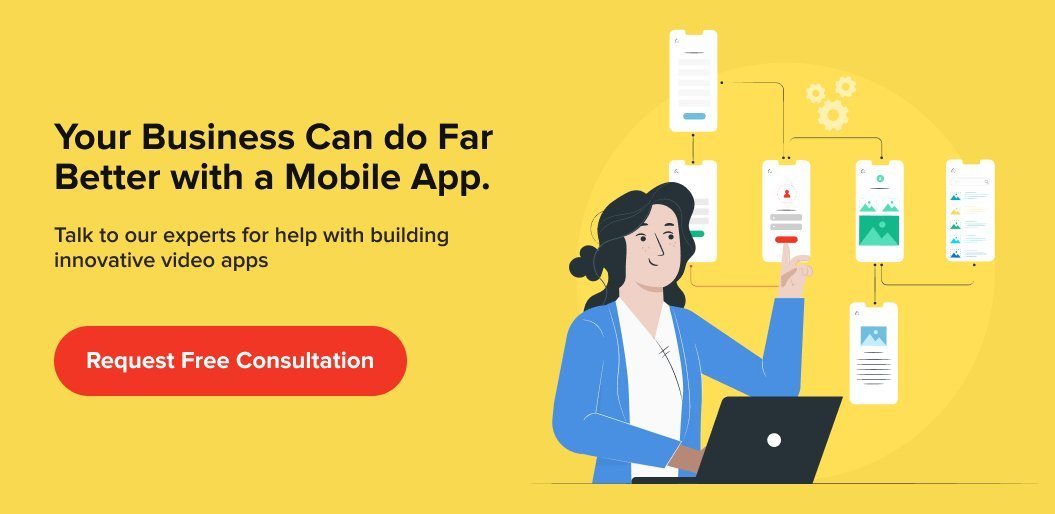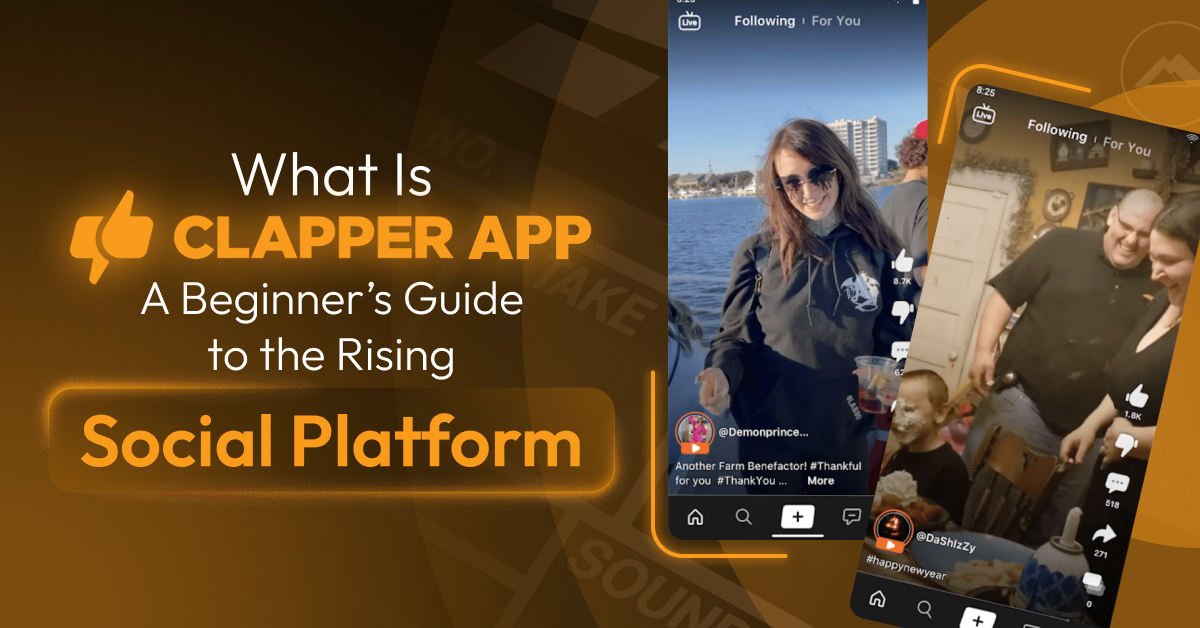The mobile market has seen unprecedented growth in the past decade. With more than 5 million+ apps across the globe (and counting), the market indeed is ripe with opportunities and competition.
Given such high demand, businesses without an online app are sure to miss out on a significant market opportunity. Add to that the fact that most things today are shifting online, and having a mobile app becomes a must for any business.
But building your mobile app can often be very demanding. You’ll need to hire a competent mobile app development company to do the job for you.
As challenging as it might seem, following the right steps can surely yield great results (and returns) for your business within the mobile app market.
Below is a list of 10 steps covering all aspects of app development, from coming up with an app idea to launching your app.
1. Ideate
If you are serious about creating your app, you probably already have an app idea. You could either want to develop an app from scratch or create an online presence for your existing business.
If your app idea is new, you need to make sure it’s never been done before. Hard to pull off in a world with millions of apps, but still not impossible. Originality is often the best way to stand out in a crowded ecosystem.
If you can’t be original, be exceptional. If you can solve a problem better than anyone else out there while providing an excellent user experience, your app’s growth is bound to explode.

On the other hand, if you already have an established business and wish to spread out in the online territory, you must figure out what you need from your app. It would help to ask questions like:
- What type of app would be the best to achieve your business goals?
- Where does building an app fit inside the ‘big picture’ of growing your business?
- How well does your app gel with your existing revenue model? And does it help scale it?
Before getting anywhere on your app development journey, you need precise answers to such questions. A laser-sharp clarity regarding your development needs and goals will ensure a smoother and better development process.
So, ideate. Think in creative ways while providing practicality. Having a clear plan and a solid idea will help you win in an ultra-competitive market.
2. Market Research
You know what your app will be about, now let’s figure out if it’ll work. If you did the previous step right, you’ve already started with your market research. Market research, simply put, is trying to understand customer behavior and if they’ll consider using your app or not.
First, you need to validate your app idea. Use tools like Google trends and keyword planners to get an idea of how popular your niche is. Make sure you are entering a growing market and that you have a chance at succeeding within it.
Second, you need to define your target audience. Ask questions like:
- Who would be interested in my app?
- What are their needs and goals?
- How can my app best serve them?
Once you know your target market, explore your competitors. Conduct a thorough analysis of rival services’ pros and cons and figure out a way to improve on them. Remember, your app needs to be unique while also being practical and useful.

And finally, set up and promote a landing page for your app if possible. The page only describes your app idea; there is no product to sell or showcase. But doing so offers a great advantage, i.e., it lets you gauge audience engagement and figure out if your idea is something that interests people.
At this point, you’ll also start coming up with a brand image/story, which will help in securing investments and further engagement with your customers.
3. Choose your platform and tech stack
This is the most critical choice you’ll make in your app development process. With 2.87 million apps on the google play store and 1.96 million on Apple’s app store, which one should you target?
Truthfully, it depends on your goals and your budget.
Ideally, you want to develop an app for both platforms to maximize your reach. However, the two are two separate worlds indeed, and targeting both at once can effectively double your app development cost.
Should you first enter into one of the two stores and later develop an app for the other? Or should you go for the hybrid approach? Saving costs and time but sacrificing the functionality of your app. Or should you consider web apps?
The choices can be overwhelming. But ultimately, pick your plan based on your research and goals. Your approach will define the tech stack you choose.
Generally, your in-house developers will make this choice based on your requirements. If you are going to hire someone to develop your app, make sure you reach out to the top app development companies that can make the right decisions for you.
Either way, choosing a tech stack that’s flexible, powerful, and scalable is crucial for your app’s long-term growth and health, so make sure you choose the right one.
4. Budget and Guidelines.
At this point, you probably want to dive into the development process right away. Perhaps, for this reason, budgeting is often ignored, but it is nonetheless important.
Building an app can be a massively expensive affair, especially if you don’t plan for it in advance. Ensure you allocate a budget for every step of the development process (and beyond) and prepare for emergency expenses in case they show up.
The primary cost here comes from developing the app itself, which further depends on many factors. What type of functionality do you need in your app? Will you require servers to hold your data? How sophisticated is your API? How much of the development will you outsource? All of this and much more contribute to the overall budget of development, which if you didn’t guess by now, can quickly escalate.
Generally, developers charge based on the number of hours required to build the app. But because this time can vary depending on your application’s complexity and unique requirements, the final cost for the app’s development can rarely be estimated. You’ll most likely be given a rough estimate or a range, so be prepared to spend a bit extra if your app demands it.
Beyond development, there are multiple costs one needs to consider, like spending on the app’s launch, promotion, and maintenance. Even simply submitting your app to the stores requires a developer license, which costs money. Precise budgeting is thus essential for a smooth app-building process devoid of any ‘sudden costs’
It is also worth mentioning that the Google play store and the Apple app store require dedicated developers to follow their respective guidelines to publish their apps on the said platforms.
These generally revolve around critical factors such as safety, design, performance, etc. It is always advisable to be well aware of these guidelines and policies before the development process begins.
5. App Design
In the world of mobile app development, the most significant ‘make-or-break’ factor when it comes to customer adoption is the UX and UI of your app.
The user experience (UX) is how a user feels while interacting with your app, and the user interface (UI) is how your app appears to them. Needless to say, both of these should be top-notch if you wish to get competitive in the market.
Because UX and UI are so important for your app’s growth, it is always recommended you hire top user experience (UX) design companies to do the job for you.
When designing your app, start with wireframes. A wireframe is a simplified visual copy of your final plan. It gives you an idea of how your app looks and feels.
Think of it as a basic humbled version of your final product. Devoid of any aesthetic elements like pretty fonts and fancy animations, a wireframe lets you test your app’s key functionality.
Use wireframes to map out user journeys and improve your design until you can ensure an exceptional user experience. Remember, you could have built the most useful app out there, but if it is not easy to use, most people will simply ignore it.
The few apps that have made it big in the mobile world have always had exceptional UX and UI design. Without a user-friendly design, you are doomed to fail.
Luckily there are many free tools available for wireframing and storyboarding. Utilize these and only move forward once you get a well-optimized, functional design.
6. Building a prototype
At this point, you know exactly what you are building, whom you are building it for, and even how your app should look, feel, and work. So now it’s time to build it.
Building your app though can still be daunting despite all the research and planning you’ve done so far. Mainly because the app building process can be extensive, and it’s easy to get distracted trying to do everything at once.
The best way to get around this is to focus on your app’s main functionality and then build outwards towards the other less important features. Try creating an MVP before developing a full-fledged app or, if that is still more than what you can get done at once, start with prototyping.
The point is to build in manageable chunks starting from the core to the lesser important features. This will help you stay on track and ease out the building process.
Another major advantage of prototyping is that it lets you identify and improve on any mistakes or flaws within your app’s central framework/functionality.
Something that would be very difficult to resolve in the later stages. And lastly, having a prototype or an MVP opens up new possibilities like having a better chance at harnessing customer feedback or even securing investors.
So don’t go all-in at once when trying to build your app. Work intelligently and incrementally from the most important to the least important aspects of your app. Build prototypes and MVPs and develop/improve on them accordingly.
7. Testing
After you’ve built a good enough product, you’ll need to find and fix all the ways in which it can fail. In other words, test your app as much as you can. Scrutinize everything, from major programming errors to minor aesthetic imperfections. The more rigorous your testing, the better your final product.
Testing comes in progressive stages though. First, you need to start with testing out singular units and aspects like unit testing, integration testing, network/service testing, etc.
After which, you should focus on testing the app as a whole. This is alpha testing, where the developers manually test the app aiming to eliminate bugs and improve the app’s functionality.
Alpha testing involves both black and white box testing (testing without and with access to the app’s code). Although an essential step that lets you address all major bugs and issues, it is far from being enough.
The final phase is when your app is released to select real-world users for rigorous ‘everyday’ testing. This is the beta testing phase, where minor bugs and inconsistencies get addressed. Beta testing also allows for gaining a ton of feedback and suggestions.
But simply testing your app won’t do it. Ensure you implement reliable feedback channels with your beta testers and be quick to fix and improve on the issues raised.
Both Google and Apple offer their official beta testing platforms, namely Google play console and Testflight. However, you can always opt for third party testing platforms if you wish to do so.
8. Implement Analytics
App analytics are precisely what the name says, analytics for your mobile application. Statistics like app retention time, engagement ratio, app store rankings, etc., are crucial indicators of your app’s performance. Monitoring these and improving based on your analytics data produces substantial growth that cannot be overlooked.
There are many analytics tools like google’s firebase and apple’s app analytics available to your disposal. Use these to understand how customers are interacting with your applications.
Every app has a different end goal and a different user path; based on what you want your app to do, pick up a few key metrics and focus on improving on those.
Building your app is just the first step in long-term app success; the next is optimization. Understand your user’s needs and behaviors and tweak your app to suit them.
App analytics are the developer’s superpower; they provide invaluable insights ignoring which will reduce your development strategy to a ‘hit-or-miss’ type of an effort.
9. Launching your app
You’ve built your app, and it is ready to be launched. Congratulations! However, much like everything else on the list, launching your app isn’t as straightforward as it sounds, and it is vital to get it right.
It is easy to simply publish your app on the app stores and call it an app launch. A full-fledged launch though, requires a lot more. While publishing, you’ll need to consider factors such as App Store Optimization (ASO) and maintaining stunning visuals for your app.
The number one factor driving up app downloads is app store rankings. To leverage this, you’ll need to make sure you rank high up for your targeted keywords.
Make sure your app title and description are optimized for the same. Utilizing high-quality graphics, screenshots, and an eye-grabbing app icon is also recommended to engage your audience and drive up downloads.
Beyond publishing, marketing, and promoting your app are essential for audience acquisition. This is the time to utilize your existing audience.
Announce your launch across all your social media platforms as well as your mailing list. If you’ve had an active marketing campaign so far, your audience would be eager to finally try out your app.
Turn your early adopters into loyal fans and regular users. Roll out incentives if possible, and make app adoption engaging to combat churn. Once you have a significant user base, encourage them to promote your app.
If you’ve done a good job building your app, your users would probably be recommending it already. Friends and family’s recommendations are the second most significant factor (after search rankings) for driving up app downloads, so try your best to get recommended.
10. Update and Improve
From a humble idea in your imagination to a finished product on the app store, you’ve done it. Good Job! The only thing left to do now is to bring everything together and improve on what you’ve built.
By this time, you would be sitting on a ton of feedback, bug reports, and suggestions. Add to that an ever-growing list of features to be added, and it is time to release patches and updates.
When improving your app, remember to focus on customer engagement and retention. Incorporate all the consumer feedback you can; people love it when apps listen and offer precisely what they want. Study your analytics closely and experiment with various features to see what improves your desired metrics.
And lastly, continue to add to your app’s functionality with new features. Apps that continue to receive updates and features often gather a loyal following.
Conclusion
Building a successful app is challenging, but certainly worth the effort. With appropriate planning and dedication towards creating something exceptional, your dream of making it big in the mobile world can turn into reality. Hope you find great success in your app-building endeavors.




























